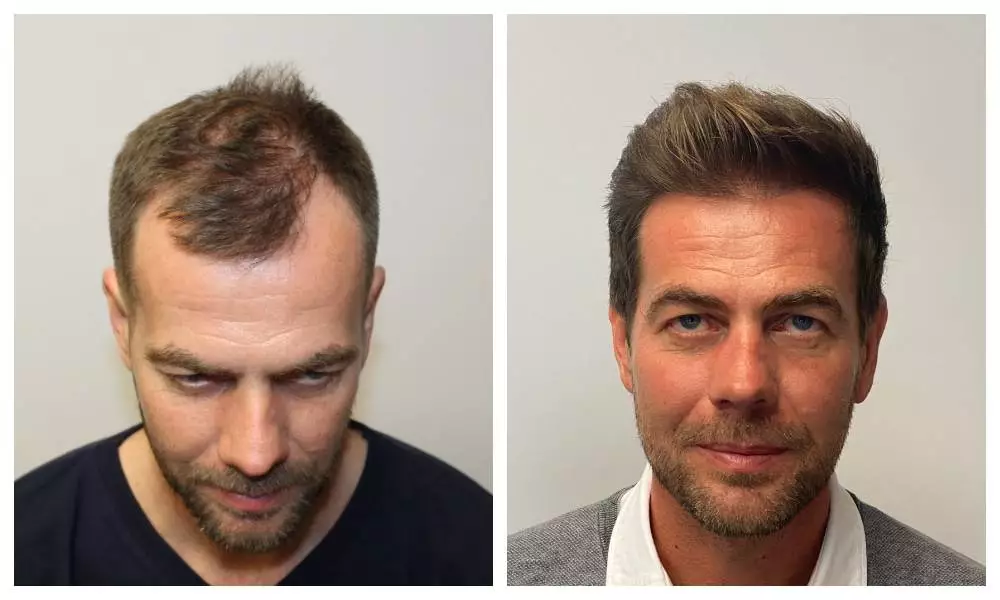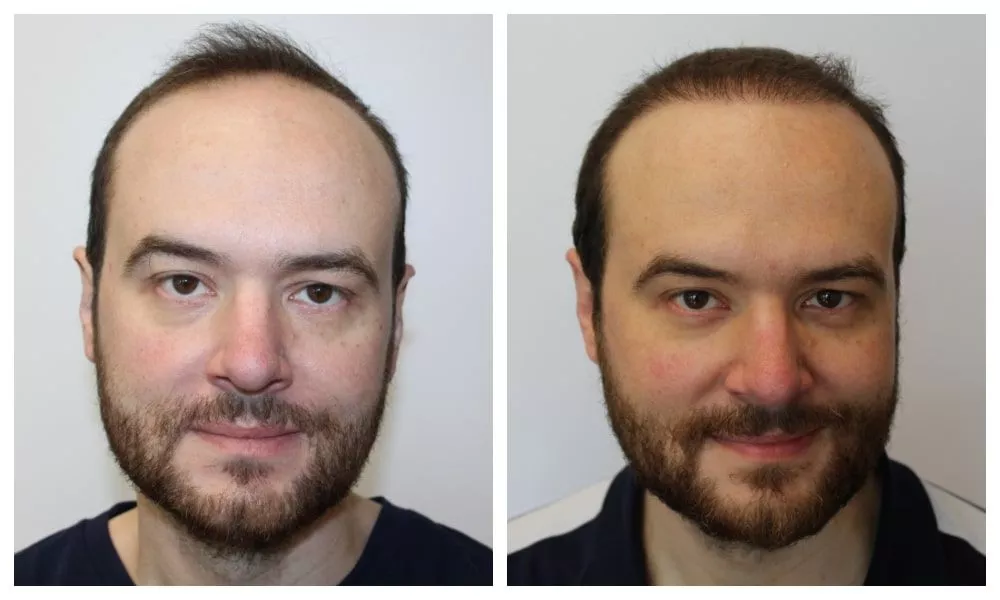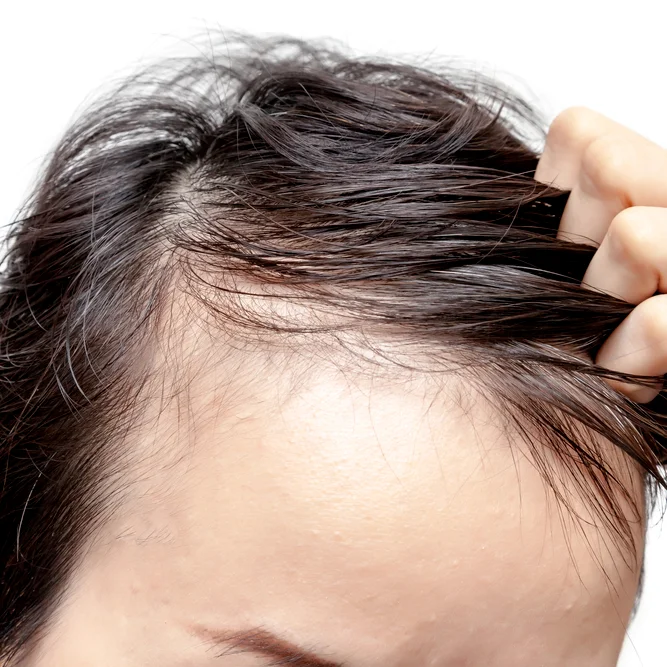FUT Hair Transplant | A life-changing Procedure For Hair Loss
Read in Arabic (تقنية زراعة الشعر بالرياض).
Hair loss can be a frustrating and emotional experience for both men and women. While there are many solutions available, FUT (follicular unit transplantation) hair transplant has become a popular choice for those seeking a permanent solution to hair loss. This advanced procedure involves transplanting hair follicles from the donor area of the scalp to the recipient area, resulting in a fuller and thicker head of hair. This article will explore everything you need to know about FUT hair transplant, including the procedure, benefits, and potential risks. So, if you’re considering FUT hair transplant as a solution to your hair loss, keep reading to learn more.
Procedure Time
4 - 8 Hours
Downtime
4 - 5 Weeks
Back to Work
5 - 10 Days
Results
5 - 6 Months
What is a FUT Hair Transplant?
FUT hair transplant stands for “Follicular Unit Transplantation” and it’s a surgical hair restoration procedure.
In this procedure, a strip of hair-bearing skin is removed from the back of the head, where the hair is less likely to fall out. Then, the strip is divided into tiny grafts, each containing one to four hair follicles. These grafts are then transplanted into the bald or thinning areas of the scalp.
FUT hair transplant is one of the most common and effective hair restoration methods. It’s often recommended for people with advanced hair loss or those who need a large number of grafts. However, like any surgical procedure, it does carry some risks, such as infection or scarring.
It’s important to consult with a qualified hair restoration surgeon to determine if FUT hair transplant is the right option for you. They can evaluate your hair loss and recommend the best treatment plan to achieve your desired results.
How does FUT Hair Transplant Work?
FUT hair transplant works by removing a strip of hair-bearing skin from the back of the patient’s head under local anesthesia. The surgeon then carefully divides this strip of skin into individual hair grafts using microscopic dissection techniques.
Each graft contains one to four hair follicles, which are then transplanted into the recipient area of the scalp where hair is thinning or balding. The surgeon makes small incisions in the recipient area and places the grafts in a way that matches the natural growth pattern of the patient’s hair.
The transplanted hair grafts will start to grow new hair within a few months after the procedure. Over time, the transplanted hair will continue to grow and look natural, just like the patient’s original hair.
FUT hair transplant is a safe and effective way to restore hair for people with significant hair loss. However, it’s important to have the procedure done by a skilled and experienced surgeon to minimize the risk of complications and ensure the best possible results.
FUT Before and After
You can see the clear difference between before and after the FUT hair transplantBook your consultation now at Enfield Royal Saudi to know more about it.


What are the Benefits of FUT Hair Transplant?
Following are some of the benefits of FUT hair transplant
- Provides a permanent solution for hair loss
Restores natural-looking hair density and thickness - Can be customized to suit the patient’s unique hair loss pattern and goals
Results are long-lasting and can improve the patient’s confidence and self-esteem - Can be a more cost-effective option compared to other hair restoration methods in some cases
- Can be performed in a single session or multiple sessions, depending on the extent of hair loss and the patient’s needs
- The recovery period is relatively short, and most patients can return to work and normal activities within a few days to a week after the procedure
- FUT hair transplant is a well-established and widely used hair restoration method, with a high success rate and low risk of complications when performed by a skilled and experienced surgeon.
FUE vs FUT Hair Transplant which is better?
Both FUE and FUT hair transplant procedures are effective methods of hair restoration, but which one is better depends on the individual patient’s needs and preferences.
FUE (Follicular Unit Extraction) involves removing individual hair follicles from the donor area of the scalp using a small punch tool. The grafts are then transplanted into the recipient area of the scalp. FUE is a less invasive procedure than FUT and doesn’t require the removal of a strip of skin from the scalp.
FUT (Follicular Unit Transplantation), on the other hand, involves removing a strip of hair-bearing skin from the donor area of the scalp and dividing it into individual hair grafts. The grafts are then transplanted into the recipient area of the scalp. FUT is a more invasive procedure than FUE and requires stitches to close the incision.
What are the pros and cons of FUT and FUE Hair Transplant?
Both FUT (follicular unit transplantation) and FUE (follicular unit extraction) are popular hair transplant methods used to restore hair loss. Here are some of the pros and cons of each method:
Pros of FUT Hair Transplant
- More grafts can be harvested in a single session than FUE.
- The strip of scalp that is removed can be dissected into smaller follicular units for transplantation, resulting in a higher yield of grafts.
- The donor area can be closed with sutures or staples, resulting in a smaller scar than FUE.
Cons of FUT Hair Transplant
- The procedure involves removing a strip of scalp, which may result in a longer recovery time and a higher risk of complications.
- The scar may be visible if the hair is cut short.
- The procedure may be more uncomfortable during the healing process due to the use of sutures or staples.
Pros of FUE Hair Transplant
- The procedure is less invasive and does not involve removing a strip of scalp.
- The recovery time is typically shorter than FUT.
- The scars are smaller and less visible than FUT.
Cons of FUE Hair Transplant
- The number of grafts that can be harvested in a single session may be limited.
- The procedure can be more time-consuming than FUT.
- The yield of grafts may be lower than FUT.
- Ultimately, the choice between FUT and FUE hair transplant depends on individual circumstances and preferences. It’s recommended to consult with a qualified hair transplant surgeon to determine which method is best for you.
What are the techniques used for FUT Hair Transplant?
There are several different variations of the FUT technique, including:
Strip Harvesting
This is the traditional FUT technique, which involves removing a long, thin strip of scalp from the donor area using a scalpel. The wound is then closed with stitches or staples.
Trichophytic Closure
This is a modified version of the strip harvesting technique, which involves trimming the edges of the wound in such a way that the hairs at the edge of the wound grow through the scar, making it less visible.
No-Stitch Technique
This is a variation of the strip harvesting technique that involves using a special surgical tool to remove the strip of scalp without the need for stitches or staples. This can result in a faster recovery time and less scarring.
Mega Session
This is a technique where a large number of follicular units are transplanted in a single session. This can result in more hair being transplanted in a shorter amount of time, but it may also increase the risk of complications.
Dense Packing
This is a technique where the transplanted hairs are placed very close together to create a more dense, natural-looking result. This technique requires a skilled surgeon and can result in a higher cost.
It’s important to note that FUT is not the only hair transplant technique available. There is also a newer technique called FUE (Follicular Unit Extraction), which involves removing individual follicular units directly from the scalp using a small punch tool. Each technique has its own advantages and disadvantages, so it’s important to consult with a qualified hair transplant surgeon to determine which technique is best for you.
Procedure of FUT Hair Transplant
There are several steps in FUT hair transplant some of them are as follows:
Consultation
The first step in any hair transplant procedure is a consultation with a qualified hair transplant surgeon. During this consultation, the surgeon will examine your hair loss and determine whether you are a good candidate for FUT or other hair transplant techniques.
Preparation
Before the procedure, the surgeon will mark the donor and recipient areas and administer local anesthesia to numb the scalp.
Strip Harvesting
Once the scalp is numbed, the surgeon will make a long, thin incision in the donor area and remove a strip of scalp tissue. The length and width of the strip depend on the amount of hair needed for transplantation.
Follicular Unit Dissection
The strip of scalp tissue is then dissected into individual follicular units under a microscope. Each follicular unit typically contains 1-4 hairs.
Recipient Site Creation
Once the follicular units have been dissected, the surgeon will create tiny incisions in the recipient area where the follicular units will be transplanted.
Follicular Unit Transplantation
The individual follicular units are then transplanted into the recipient area one by one using a microsurgical needle or forceps.
Post-Procedure Care
After the hair transplant, the scalp will be bandaged and the patient will be given instructions on how to care for the scalp and hair in the days and weeks following the procedure.
The FUT hair transplant procedure typically takes several hours, depending on the size of the area being transplanted.
What is Fut Hair Transplant Post OP Care
Here are some of the postoperative care instructions for FUT hair transplant:
- Keep the scalp clean using a special shampoo recommended by your doctor.
- Avoid physical activities for at least a week after the surgery.
- Take medications as prescribed by your doctor, including pain medication and antibiotics to prevent infection.
- Avoid sun exposure and protect the scalp from the sun using a hat or sunscreen with high SPF.
- Avoid smoking and alcohol consumption for at least a week after the surgery.
- Follow up with your doctor for scheduled appointments to monitor the healing process and growth of the transplanted hair.
What is the FUT Hair Transplant Recovery timeline?
The recovery timeline for FUT (Follicular Unit Transplantation) hair transplant varies from person to person, but generally, it follows a similar pattern. Here is a rough timeline of the FUT hair transplant recovery process:
1-3 days after the surgery:
- Some discomfort, swelling, and redness may be present in the scalp.
- Avoid any strenuous physical activities.
- Follow the postoperative care instructions provided by your doctor.
1-2 weeks after the surgery:
- The sutures on the scalp will be removed.
- Some scabbing and crusting may be present on the scalp, which will eventually fall off.
- Hair shedding is normal, but the transplanted. hair follicles remain in place and start to take root.
2-4 weeks after the surgery:
- The scalp starts to heal and any scabbing or crusting should be gone.
- Some people may experience itchiness in the scalp, which is a normal part of the healing process.
- The transplanted hair may appear to fall out, but this is a normal shedding process and the new hair will start to grow in a few months.
4-6 months after the surgery:
- The new hair starts to grow, and it may appear thin and fine at first.
- The growth rate varies from person to person, but most people start to see noticeable hair growth by this point.
9-12 months after the surgery:
The hair continues to grow and thicken, and the final results can be seen.
In some cases, a second hair transplant session may be necessary to achieve the desired density and fullness of hair.
It’s important to remember that everyone’s recovery timeline may vary, and it’s essential to follow your doctor’s postoperative care instructions to ensure a successful recovery and optimal hair growth.
What is the success rate of FUT VS FUE?
Both FUT (Follicular Unit Transplantation) and FUE (Follicular Unit Extraction) hair transplant procedures have a high success rate in terms of hair growth and natural-looking results. However, the success rate can vary depending on the individual case, the skill of the surgeon, and other factors such as the patient’s age and health.
In general, FUT has a slightly higher success rate than FUE because it allows for the harvesting of a larger number of hair follicles in a single session. This means that more hair can be transplanted, resulting in better coverage and density.
On the other hand, FUE has a lower risk of scarring and a shorter recovery time compared to FUT, making it a preferred option for some patients. The success rate of FUE can also be high if performed by an experienced and skilled surgeon.
It’s important to note that both procedures require a significant investment of time and money, and success depends on various factors such as proper preoperative evaluation, good postoperative care, and realistic expectations.
What is the Cost of a FUT Hair Transplant in Riyadh?
The cost of FUT hair transplant in Riyadh, Saudi Arabia can vary depending on several factors such as the number of grafts needed, the surgeon’s experience and reputation, the location and facilities of the clinic, and other factors.
On average, the cost of FUT hair transplant in Riyadh can range from SAR 10,000 to SAR 30,000 or more, which is approximately USD 2,700 to USD 8,000 or more. However, it’s important to note that these are just estimates and the actual cost may vary depending on individual circumstances.
It’s recommended to consult with a qualified hair transplant surgeon in Riyadh to determine the exact cost of FUT hair transplant based on your specific needs and preferences. The surgeon can also provide you with more information about the procedure and answer any questions you may have.
FUT Hair Transplant
Starting FromFUT Hair Transplant
StandardWhat is Robotic Hair Transplant?
Robotic hair transplant is a hair restoration procedure that uses advanced robotics technology to assist in the harvesting and transplantation of hair follicles. The procedure is also known as robotic follicular unit extraction (FUE).
During the procedure, a robotic arm equipped with a specialized camera and precision tools is used to harvest hair follicles from the donor area of the scalp. The harvested follicles are then transplanted into the recipient area of the scalp using the same robotic arm.
Robotic hair transplant is a minimally invasive procedure that is designed to be more precise and efficient than traditional hair transplant methods.
Why Enfield Royal Saudi:
At Enfield Royal Saudi Arabia, we understand that hair loss can be a sensitive and personal issue. That’s why we are committed to providing our clients with the most advanced and effective hair transplant treatments, tailored to their individual needs.Our experienced team of hair transplant specialists uses the latest technology and techniques to ensure optimal results with minimal discomfort or downtime. We prioritize patient safety and satisfaction above all else, which is why we have earned a reputation as one of the most trusted hair transplant clinics in the region.Don’t let hair loss hold you back any longer. Book an appointment with us today and take the first step towards regaining your confidence and a full head of hair.
FAQs.
The majority of patients only feel a small amount of discomfort when the numbing medication is administered, following the treatment You could have a little soreness while the scalp heals but most patients report feeling little to no pain during and after NeoGraft hair transplants.
Like any surgical procedure, FUT hair transplant carries some risks and potential complications, such as bleeding, infection, scarring, and nerve damage. However, these risks can be minimized by choosing an experienced and qualified hair transplant surgeon.
Relevant Treatments.

FUE Hair Transplant
Are you tired of hiding your hair loss under hats and wigs? FUE hair transplant is a minimally invasive, advanced procedure that can provide you with a fuller head of hair and restore your confidence. With FUE, you can...

DHI Hair Transplant
DHI uses a similar technique to FUE hair implantation and is a modified version of it. In bald areas, your surgeon may remove hair follicles from an area of your scalp, often the back of your head. New hairs will ultimately....





